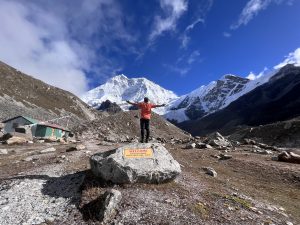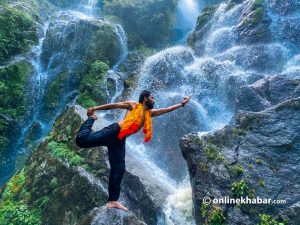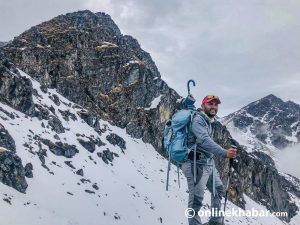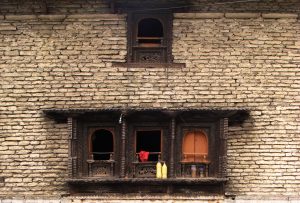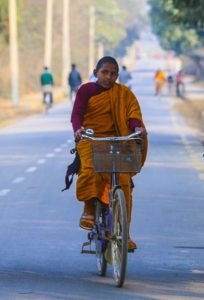Nepal’s westernmost protected area in the Terai offers visitors a chance to see what the west was like before malaria was quelled and jungles felled.
Standing on Shuklaphanta, the eponymous grassland after which the Wildlife Reserve in Kanchanpur district of west Nepal is named, you are surrounded by the hues of Nature: a wall of green sal trees all around, behind them the blue of the Churia Range, and the occasional white of calcified antlers that swamp deer have shed. In some corner, the dun patches of swamp deer herds lies.
There is colour even in the name of the grassland from which the reserve gets its name. Shuklaphanta, the largest grassland in the reserve, is a corruption of ‘Sukilaphanta,’ which means ‘white grassland.’ The name alludes to the colour that the grass heads turn to when they bloom.
But if the reserve were to be named after an animal, it would probably be called Barasingha Wildlife Reserve, after the Nepali word for swamp deer. They say that the reserve has the largest herd of swamp deer in the world, with some herds comprising of over 700 individual deer. The only thing more remarkable than this figure is the fact that only a decade or so ago a herd had double that number of deer.
The grasslands of the reserve are like smaller versions of the Savannah. Driving on these grassy carpets may not compare to a safari in Africa, but it’s special because Nepal’s other lowland national parks do not have grasslands as big as those of Shuklaphanta.
Shuklaphanta’s 305 square kilometers (plus a 243-square-kilometer buffer zone) boasts numerous types of habitats, most of which are still pristine. One example is the Rani Tal. Girdled by sal trees, the lake is a haven for birds and a treasure trove for birds and wildlife enthusiasts. You can watch whatever comes to this lake (what animal could resist such a sanctuary?) concealed comfortably (watch out for the red ants!) in a machan on the lake’s western end.
Shuklaphanta is exceptionally rich in biodiversity for a park of its size. The reserve has 43 species of mammals and 425 species of birds. Its rivers and streams have mugger crocodiles and smooth-coated otters, besides 27 species of fish, which include the golden mahaseer and rohu. Reptiles include golden monitor lizard, Indian python, and several species of cobras. The reserve also has a rare and intriguing resident, the hispid hare (Caprolagus hispidus).
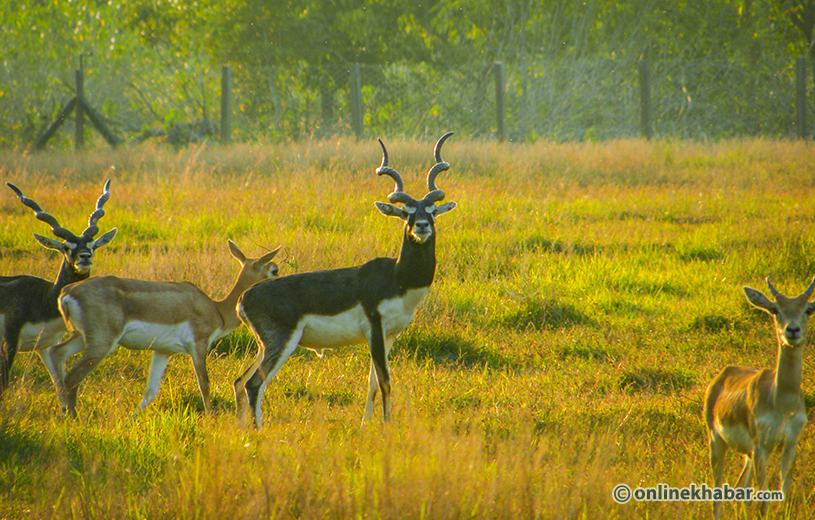
Beside wildlife, Shuklaphanta also has some interesting historical and cultural sites. Near Rani Tal, there are remains of a wall said to be that of an ancient fort belonging to a Tharu king. Old bricks are also found in another part of the reserve.
Shuklaphanta is one of the last remaining segments of the former vast wilderness that was Nepal’s western Terai. It is a sanctuary not only for Nepal’s many endangered wild animals but for the region’s past, a time when the west was truly wild. It helps you see what the early settlers from the hills were up against and inspires deep respect for the Tharus, for whom the wilderness was their backyard.
Checklist
Getting There

Over half a dozen buses leave daily from Kathmandu for Mahendranagar. The journey takes 15-18 hours. Tickets are available in Sundhara. There are also daily flights from Kathmandu to Dhangadhi. From Dhangadhi, it is an hour by road to Mahendranagar. Arrangements for transportation from the airport should be made in advance, as taxis are not always available at the airport. However, buses are available on the main road, which is two kilometers from the airport.
Public transport is almost non-existent on the road from Mahendranagar to the reserve’s entrance eight kilometers away. Hired jeeps are indispensable as jungle walks are not permitted .
While you are there

In Hirapur Phanta, a grassland in the reserve’s northern side, a herd of blackbucks is making a comeback. In 2012, a small herd of blackbucks was brought from Nepalgunj and released on the 7.5 hectares of fenced-in grassland, as part of the Blackbuck Re-Introduction Program. The antelopes have flourished since then providing the visitors a wonderful opportunity to observe and photograph gorgeous animals at close quarters.
After spending time in the jungle and grasslands you can visit other interesting places around Mahendranagar. One place not to miss is the Dodhara Chandani Bridge, Nepal’s longest suspension bridge. The 1.6 kilometer long bridge, which spans the Mahakali River, is a couple of kilometers west of the reserve’s entry point in Majhgaon. The undulating design of the bridge forms a spectacular silhouette against the setting sun.
The rural areas around Mahendranagar have many Tharu villages. It is in them that indigenous culture is still making a stand. Everything in a Tharu home is connected to the world around them, which, originally, was the wild world. Water containers made from gourds and roofs and ropes made from wild grass reflect their gift of crafting household items from jungle resources. To get a feel of their traditional lifestyle and communal bonds, join them when they go fishing in groups. Savor their pace of life by riding in a bullock-cart.
Places to Stay

For a feel of staying near the wilderness, try Shuklaphanta Jungle Cottage (099-524693/9848994693) or Suklaphanta Wildlife Camp (01-4355609/9851003677). The other option is to return to hotels in Mahendranagar. In terms of amenities, Hotel Sweet Dream (099-522313), Opera Hotel (099-522101), and Hotel New Anand (099-521693) are Mahendranagar’s best hotels.
Eat

Mahendranagar does not have many restaurants. Galli No. 3 has a couple, and there are several places outside the stadium (manch) near the main crossroads selling snacks like chowmein. The bazaar area has a number of dhaba-style eateries, most of them in Galli No. 4. The aforementioned hotels have decent menus, offering Nepali and Indian cuisines. The lassi at Bhatta Goras (Galli No. 5) is worth trying at least once and Guddu Sweet House in Galli No. 1 is the place to get mithai (dessert).
The rural areas around Mahendranagar have many Tharu villages. It is in them that indigenous culture is still making a stand. Everything in a Tharu home is connected to the world around them, which, originally, was the wild world. Water containers made from gourds and roofs and ropes made from wild grass reflect their gift of crafting household items from jungle resources. To get a feel of their traditional lifestyle and communal bonds, join them when they go fishing in groups. Savor their pace of life by riding in a bullock-cart.
Must Haves
![]()
Hats and sunscreen are a must on the grasslands. The size of the grasslands and the rich birdlife are reason enough to carry binoculars.






